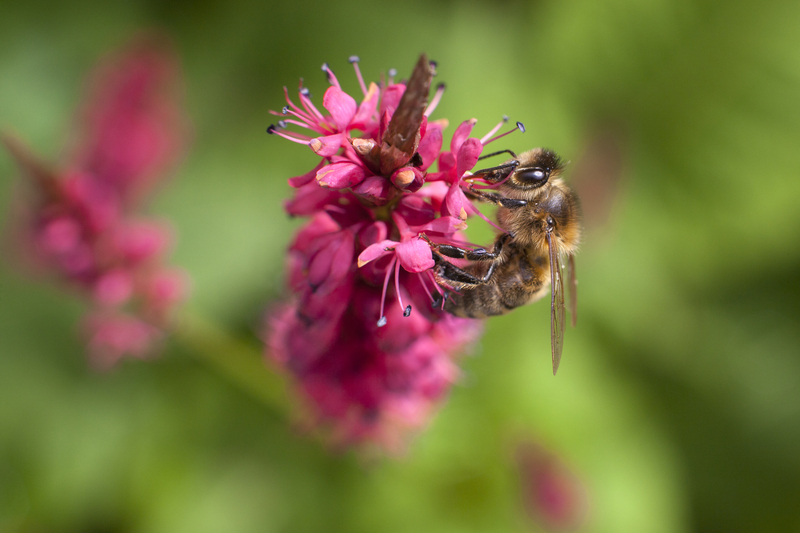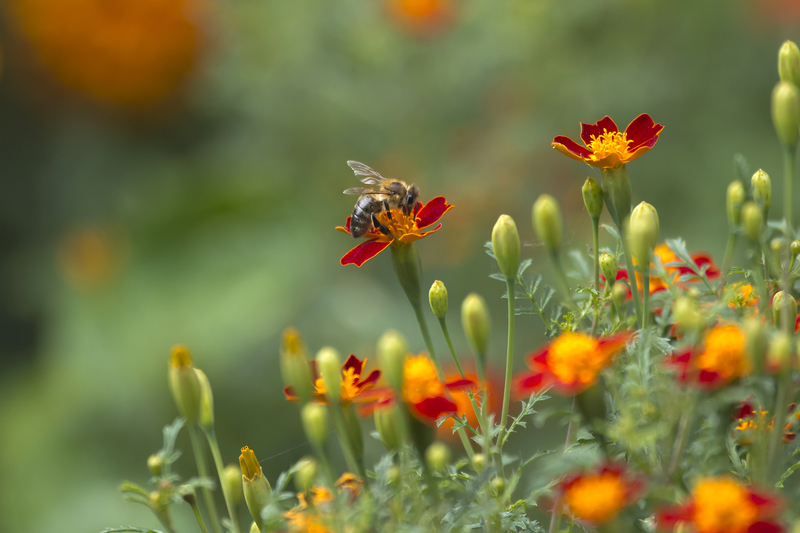Lush Orchids Await: Cultivate with Confidence
Posted on 17/05/2025
Lush Orchids Await: Cultivate with Confidence
Orchids, with their captivating blooms, add elegance and allure to any space. Yet, their beauty often comes with a reputation for being fussy and challenging to grow. The truth? Cultivating lush orchids can be both rewarding and surprisingly manageable when you have the right knowledge and tools at your fingertips. In this comprehensive guide, you will discover tips, tricks, and insights that empower you to cultivate orchids with confidence, ensuring healthy growth, repeated blooming, and sensational displays year after year.
Understanding Orchids: The Secret to Flourishing Blooms
Before delving into the care and cultivation of orchids, it is essential to understand what sets these plants apart. Orchids are members of the Orchidaceae family, one of the largest plant families on earth. Their diversity spans more than 25,000 species and over 100,000 hybrids, making them fascinating for both novice and experienced growers.
- Epiphytic Orchids (e.g., Phalaenopsis, Cattleya, Dendrobium): Grow on trees, using airy roots to absorb moisture from the environment.
- Terrestrial Orchids (e.g., Paphiopedilum, Cymbidium): Thrive in soil and forest floors, adapted to ground living.
Grasping these basics is the first step toward cultivating orchids successfully and achieving lush, thriving orchid collections.

The Essential Elements for Orchid Success
1. Light: Let There Be (The Right Kind of) Sunshine
Light is a critical factor that often determines whether your orchid will bloom. Most lush orchids require bright, indirect light. Here's how to get it right:
- Place your orchids near an east or west-facing window, protected by sheer curtains.
- Avoid direct scorching sunlight, as it can burn delicate leaves.
- Observe leaf color: Healthy orchids have medium green leaves; dark green signals insufficient light, while yellowish leaves indicate excess light.
For indoor growers, consider full-spectrum grow lights to supplement natural light, especially in winter or low-light environments.
2. Water: Finding the Perfect Balance
Watering is perhaps the most confusing aspect for many orchid cultivators. Too much or too little water can spell disaster. Achieve confidence with these guidelines:
- Check the roots and potting media before watering. Orchids prefer to dry out slightly between waterings.
- Use tepid, distilled, or rainwater to avoid harmful minerals and chlorine.
- Water in the morning to prevent rot and give leaves time to dry before nightfall.
- Epiphytic orchids (the majority) thrive in well-draining, airy orchid mixes, such as bark, sphagnum moss, or coconut husk.
*Pro Tip: Every orchid enthusiast should lift the pot before and after watering to gauge moisture levels by weight.*
3. Humidity: Replicating Tropical Rainforest Conditions
Orchids hail from humid, tropical environments. Adequate humidity--typically 40-70%--promotes lush, vibrant orchids.
- Place a humidity tray (a shallow tray with pebbles and water) beneath your orchids.
- Mist frequently with demineralized water, but avoid over-wetting foliage.
- Group your plants to increase local humidity naturally.
4. Temperature: Keeping It Just Right
While each orchid type has its preferences, most flourish in temperatures that mimic their natural habitats.
- Day: 65-80?F (18-27?C)
- Night: 55-65?F (13-18?C)
- Maintain a slight temperature drop at night to trigger blooming cycles.
*Consistency is key--avoid drastic temperature fluctuations and cold drafts.*
5. Fertilization: Feeding Your Lush Orchids
Nourishment is essential to achieve the lushest orchid blooms. A balanced, orchid-specific fertilizer applied with caution can make a huge difference.
- Feed every two weeks during active growth, and reduce frequency when growth slows.
- Dilute fertilizer to half or quarter strength--orchids are sensitive to overfeeding.
- Rinse the potting media monthly with plain water to clear out any salt buildup.
Remember: It's better to under-fertilize than to over-fertilize orchids.
Orchid Potting and Repotting: A Crucial Step for Healthy Growth
Why Orchids Need Special Potting Media
Unlike traditional houseplants, most orchids thrive in loose, airy substrates that allow roots to breathe. This mimics their natural epiphytic environment and prevents harmful root rot.
- Use commercial orchid bark mix, sphagnum moss, or a blend of bark and perlite.
- Select pots with plenty of drainage holes.
- Clear plastic pots can help you monitor root health and moisture.
When and How to Repot Orchids
Orchids should be repotted every 1-2 years, or when the potting media breaks down. Signs it's time to repot:
- Poor drainage or sour smell from the media
- Roots outgrowing the pot or circling the container
- Visible decline in blooming performance
Steps to Repot Your Orchid with Confidence:
- Carefully remove the orchid from its pot and gently shake off old media.
- Trim away dead, mushy, or rotten roots with sterilized scissors.
- Position the orchid in the center of a clean pot and fill with fresh, moistened orchid mix.
- Water lightly and allow the plant to adjust to its new environment out of direct sunlight for a few days.
Do not fertilize for a couple of weeks after repotting to allow roots to recover.
Common Orchid Types and Their Unique Care Needs
Understanding your specific orchid variety is vital for cultivating lush orchids with confidence. Here are care insights for some of the most popular types:
Phalaenopsis (Moth Orchids)
- Ideal for beginners; tolerant of low and medium light.
- Water every 7-10 days; avoid letting water sit in leaf axils.
- Initiate blooms by exposing to cooler nighttime temperatures for a few weeks.
Cattleya Orchids
- Prefer bright, filtered light and good air movement.
- Allow potting medium to dry slightly between waterings.
- Feed regularly for vibrant blooms.
Dendrobium Orchids
- Require lots of light and a distinct dry period after blooming.
- Typical blooming season is late winter to spring.
- Water sparingly during winter dormancy, increase with active growth.
Paphiopedilum (Lady Slipper Orchids)
- Prefer moderate light and higher humidity.
- Keep the potting media just barely moist, never soggy.
- Repot annually for best results.
Preventing and Solving Common Orchid Problems
To enjoy lush, thriving orchids it's crucial to stay vigilant for pests and diseases, as well as environmental stresses:
- Leaf spots: Can indicate fungal or bacterial infections. Remove afflicted leaves and practice good air circulation.
- Pests: Look out for mealybugs, scale, aphids, and spider mites. Treat with insecticidal soap or neem oil.
- Root rot: Avoid overwatering and use proper potting media.
- Bud blast: Flower buds suddenly drop, often from sudden environmental changes. Maintain stable conditions to avoid shock.
Blooming and Reblooming: Unlocking the Secrets to Lush Orchid Flowers
Nothing compares to the spectacle of orchids in full bloom. To encourage repeated flowering:
- Maintain optimal light and temperature as described above.
- Feed regularly with a balanced orchid fertilizer.
- Rest period: Allow your orchid to rest after blooming, reducing watering and feeding for a few weeks.
- For some species, exposing them to slightly cooler night temperatures can trigger reblooming.
*Phalaenopsis can bloom several times on the same spike. After flowering, trim the spike just above a node to encourage a second wave of blossoms.*
Advanced Orchid Care Tips
Ready to take your orchid cultivation to the next level? Consider these expert techniques for even fuller, lusher displays:
- Air circulation: Use a small oscillating fan to mimic natural breezes and prevent disease.
- Water quality: Invest in a water filter or use rainwater for pristine hydration.
- Humidity maintenance: In dry climates, a humidifier can make a remarkable difference.
- Experiment with mounting: Try growing orchids on cork bark or wood mounts for dramatic displays and excellent air flow.

Frequently Asked Questions About Cultivating Lush Orchids
Q: Can beginners really grow orchids confidently?
A: Absolutely! With the right information, even first-time growers can achieve vibrant orchid blooms and enjoy caring for these remarkable plants. Start with forgiving varieties like Phalaenopsis and build your skills.
Q: How long do orchids live?
A: With proper care, orchids can live decades, often growing bigger and more beautiful each year.
Q: Are orchids toxic to pets?
A: Most common orchid species are non-toxic to cats and dogs, but always check for your specific type--and keep all fertilizers and sprays safely out of reach.
Conclusion: Enjoy the Art and Science of Orchid Cultivation
Lush orchids await every grower who is willing to learn their secrets and nurture them with devoted care. By applying the science-backed tips and timeless wisdom shared in this guide, you can cultivate orchids with confidence, elevating your home or workspace into a living tapestry of color and exotic charm.
Begin with the basics, observe your plants closely, and soon you'll find that lush, opulent orchids are not just for experts--but for anyone passionate enough to care for them.
Grow, bloom, and bask in the glory of your flourishing orchids--because with the right help, a lush world of orchids awaits you!
- Start small, think big, and trust your journey in orchid cultivation.
- From novice to expert, there's always something new to learn in the world of orchids.

